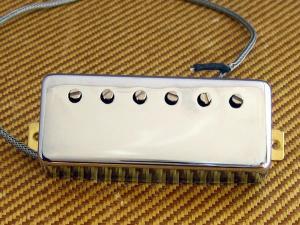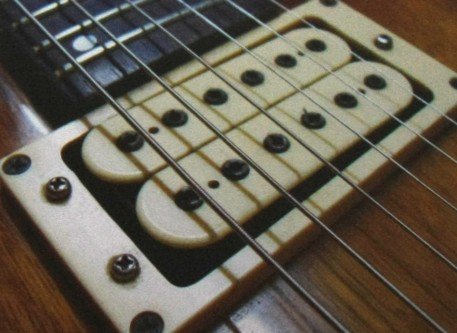
It’s the key component to what makes an electric guitar do its magic, so everyone knows how they work, right? Every blues player on the entire internet raise your hands if you know how guitar pickups work. Hmm… looks like some folks are in the dark. Since understanding your gear can lead you to getting more out of it, seems like now would be a good time to take a closer look at guitar pickups and how they help us make the music we love so much.
In an electric guitar there are two major elements involved in the production of sound: string, and pickup. We know that when we pluck a string it vibrates and makes sound. You don’t even need an amp to figure that out. The string’s sound is very soft, however, and an acoustic guitar’s abilities for amplification can quickly be outgunned in a crowded bar or in venues of large size. The solution to this problem was to create a sensor that could translate the vibrations of the string into an electronic signal that could, in turn, be electronically amplified with yet another device (the amp) and projected at louder volume.
The magic piece in this equation is the guitar pickup. The pickup is capable of translating the string’s vibrations into an electronic signal by virtue of what is called Faraday’s Law of Induction. Faraday’s Law of Induction states that any change in the magnetic environment of a coil of wire will cause a voltage to be generated in the coil.
What does a magnetic environment have to do with pickups? Perhaps it’s best to take a look at the makeup of a pickup itself. Not all pickups are designed exactly the same, of course, but a Fender Stratocaster pickup makes for a simple and effective explanation. In a Strat pickup there are six pole pieces, one for each string. The pole piece is a rod of metal that is has very small wire coiled around it numerous times, up to 7,000 windings. When the guitar is plugged in it receives a small charge that runs through the coils, resulting in the creation of an electromagnetic field above the pole piece. When the metal guitar string is picked, its movement disturbs this magnetic field, inducing a voltage in the coil that is transferred to the permanent magnet mounted below the pole pieces. The permanent magnet translates that voltage into a signal that is transferred through the volume and tone controls and out to the amplifier.
There are a variety of other types of pickups that have different designs, but the basics apply to all of them. The properties of operation in effect on pickups can be manipulated. For instance, the number of windings around a pole piece will affect the tone, more windings often causing a pickup to be “hotter.” The position of the pole piece relative to the string will change the sound, which is why it is important to adjust the pickup height properly on a guitar. If the string is too close to the pickup and the pickup magnet is very strong, the magnet’s pull can affect string vibration, lower sustain and cause tuning issues. Doing additional research on guitar pickups relative to your application can do you a world of good in achieving that special tone you desire.


